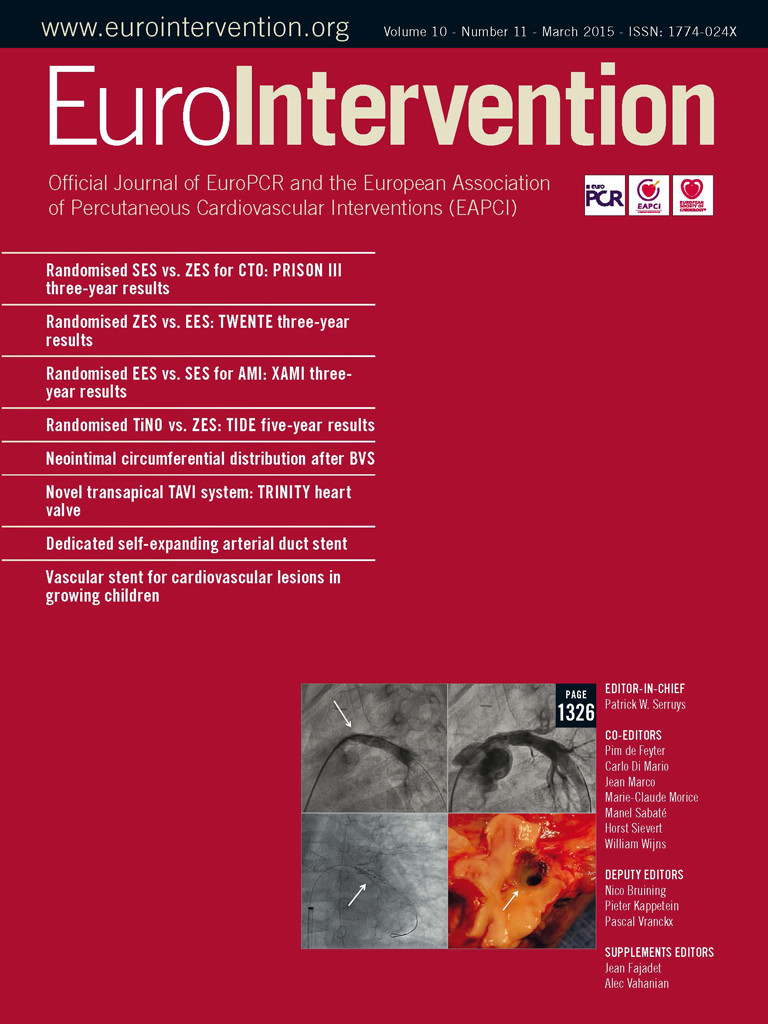In the present issue of the journal, we have compiled a series of short, mid and long-term analyses of coronary lesion revascularisation with DES. This compilation is important since we feel that medium and long-term follow-up are very relevant for such technologies. As interventionalists, we define medium or long term as three to five years post-intervention. However, in discussions with surgeons, it is apparent that their perception of timing is actually five to 10 years. So far, we have not been able to resolve the perception of what constitutes a long-term follow-up.
Taking into account recent randomised studies such as SYNTAX, FREEDOM and PRECOMBAT, it turns out that the superiority of bypass surgery over PCI is emerging after five years and not earlier. One could therefore surmise that as interventionalists our definition of long-term follow-up is relatively short and may not reflect what our colleagues in the general cardiology community perceive.
Even today, after more than 35 years, we are not assessing the reasons why we carry out these interventions, which are primarily performed in order to alleviate angina pectoris, unstable angina or acute coronary syndromes. We are still quantifying the failure of the different devices, we continue to count the mortalities, TVR, non-TVR, TVL, non-TVL, MIs periprocedural and spontaneous. Today, the challenge is that the event rates of these composite endpoints, defining the success or failure of a device, are generally around 5% to 10%, most of the time approximately 8% and some of them even less than 8%. In other words, it has become more challenging to perform a non-inferiority trial assessing the success/failure rate of a device.
Recently, with the introduction of new technologies such as the bioresorbable scaffolds, the presence of residual angina pectoris post-procedure has emerged again as a major target. In most trials, up to 25% of patients continue to have angina pectoris.
What could be the possible explanations for this?
A simple, but robust analysis of this phenomenon is, firstly, that it does not exclude the fact that in many cases we dilate and stent lesions which do not deserve to be treated, for instance when fractional flow reserve (FFR) is calculated to be >0.80. One might classify this as “inappropriate” treatment. Secondly – and conversely – sometimes we do not treat lesions that deserve to be treated, for instance, when the diameter of the stenosis is <50% and FFR is <0.80. FFR is already an important tool and it may become in the future the most common and practised criterion of assessment. Finally, in current daily practice, we do not assess the microvascular function, an assessment that was previously performed non-invasively but which today is increasingly assessable during the procedure, such as coronary flow reserve, FFR and perfusion scanning.
These three co-founding factors should be clearly unravelled in the future if our goal is to reduce the number of patients with residual angina pectoris post-revascularisation. This should become the future assessment of percutaneous treatment and will require from us a new approach when developing trials in terms of blinding, patient reported outcomes, adjudication, and the systemic assessment with FFR and CFR in our patients. It is, of course, a huge challenge, but it is the reflection that is triggered by this issue’s compilation of serial results describing in small numbers the success or failure of devices. From the patient’s perspective, he or she is on the cathlab table not to die or to have an MI or a TLR –he or she is on the cathlab table to have a reduction in their angina.
It is remarkable that we continue to collect data on device failure and call that efficacy.

